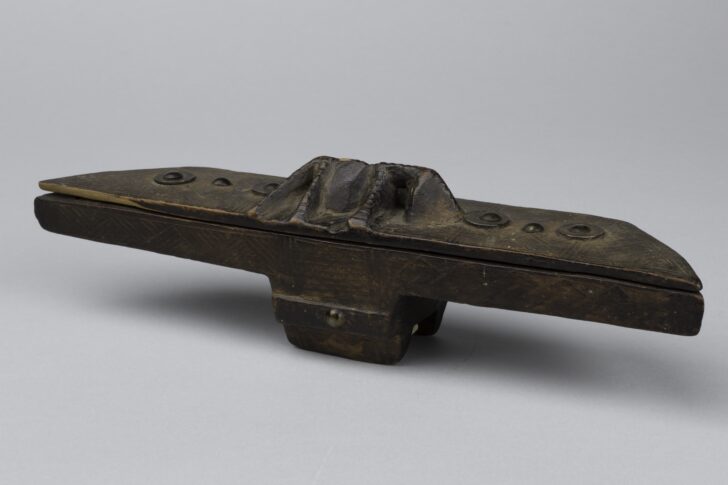Box
Kuba

Description
Subject Matter:
Kuba boxes served several purposes. Ornately decorated boxes were created as a form of competition among titled court members. Also, they were often used to hold objects such as razors for cutting raffia, personal care objects such as hairpins in addition to various ritual objects and medicinal substances. Boxes shaped like this often held razors for cutting Raffia. In particular, the cut-pile technique consisted of cutting the tufts off the raffia to create a "velvet"-like texture.
This box also contains tukula powder called tool or twool. Made from camwood, tukula was used abundantly on Kuba carvings. It was also smeared on clothing and used in times of mourning. Boxes were often used to hold tukula powder.
References:
Daniel Biebuyck, The Arts of Zaire, 1985
Georges Meurant, African Textiles from the Kingdom of Kuba, 1986
Roy Sieber, African Textiles and Decorative Arts, 1972
Jan Vansina, The Children of Woot, 1978
Physical Description:
A thin rectangular box with a lid. Four metal button-like objects are fastened on four coins from the belgian Congo—from 1921—on the base and lid of the box. There is a bulging ornate design on the center of the lid, and geometric patterns cover the entire box. One corner of the lid has a splinter broken off.
Usage Rights:
If you are interested in using an image for a publication, please visit https://umma.umich.edu/request-image/ for more information and to fill out the online Image Rights and Reproductions Request Form.